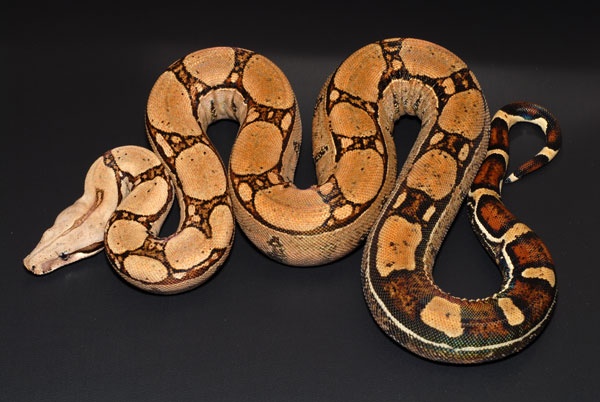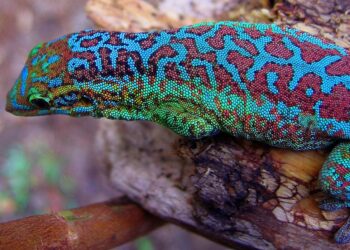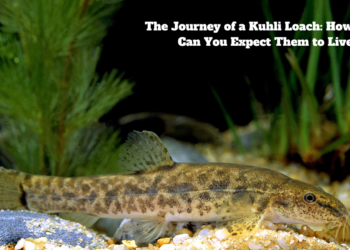If you’re considering adding a red tail boa to your family, it’s crucial to understand the proper care and maintenance required for this unique reptile. From habitat setup to dietary needs, this ultimate guide will cover everything you need to know to ensure the health and well-being of your red tail boa. Whether you’re a first-time owner or an experienced reptile enthusiast, this comprehensive resource will provide you with the essential information to keep your red tail boa thriving.
They are captivating constrictors adorned with a kaleidoscope of patterns. This comprehensive guide dives deep into their captivating nature, unraveling the secrets of their care, breeding, and more. Whether you’re a seasoned serpent devotee or a curious newcomer, prepare to embark on a journey of discovery with your scaled companion.
A Brief Introduction
Red tail boas, hailing from the lush rainforests of Central and South America, are renowned for their gentle dispositions and stunning diversity. Their namesake crimson tails add a vibrant flourish to their already mesmerizing tapestry of morphs.
From the classic charcoal and salmon of normals to the dazzling fire and ice of super cinnamons, each boa showcases a unique expression of genetic artistry. Beyond aesthetics, these serpents weave their way into human cultures, serving as symbols of protection and prosperity.
Understanding Red Tail Boa Behavior
Red tail boas, contrary to their fearsome reputation, are inherently calm and inquisitive creatures. Their arboreal ancestry grants them graceful agility, often seen as they slither through branches or perch atop their enclosure’s highest peaks.
While solitary hunters by nature, these boas exhibit a surprising degree of social intelligence, recognizing and responding to individual human caregivers. Delving into their behavioral patterns reveals a complex tapestry of instincts, curiosity, and even playfulness.
Red Tail Boa Care
Optimal Enclosures
Creating a suitable enclosure is the cornerstone of responsible red tail boa care. Size reigns supreme here – aim for an enclosure at least two times the boa’s length in both width and length. Think arboreal palaces, outfitted with sturdy branches, secure hides, and a spacious basking area.
Natural substrates like coconut fiber provide substrate burrowing opportunities, while artificial options like newspaper offer easy cleaning.
Temperature and Humidity
Red tail boas, hailing from humid and temperate climes, require meticulous environmental control. A daytime temperature gradient of 75-85°F, with a basking spot reaching 90-95°F, provides the perfect thermal dance floor. Nighttime temperatures can dip slightly, allowing your boa to thermoregulate.
Feeding Requirements
Red tail boas are obligate carnivores, thriving on a diet of appropriately sized frozen/thawed prey items. Hatchlings typically eat once a week, transitioning to bi-weekly feedings for juveniles and monthly meals for adults. Variety is key – offer a range of prey, including rats, mice, and chicks, to ensure your boa receives a balanced nutritional symphony.
Handling and Interaction
While not cuddle buddies, red tail boas appreciate gentle and respectful handling. Support their full body weight, avoid constricting pressure, and wash your hands before and after any interaction. As trust builds, you’ll witness their relaxed postures and inquisitive flickers of tongue, signs of a burgeoning bond between serpent and keeper.
Reading Suggestion: Mexican Black Kingsnake Guide
Red Tail Boa Health and Maintenance
Common Health Issues
Like any living creature, red tail boas are susceptible to occasional health concerns. Recognizing signs like respiratory issues, skin anomalies, or changes in feeding behavior is crucial. A proactive approach, including regular veterinary checkups, helps nip potential issues in the bud. Remember, a healthy boa is a happy one!
Respiratory Infections
These are often the most common and can manifest as wheezing, difficulty breathing, and discharge from the mouth or nose. Causes can include improper temperature and humidity, poor ventilation, or exposure to pollutants.
Skin Problems
Look out for blisters, rashes, shedding difficulties, or discoloration. These can be caused by infections, mites, nutritional deficiencies, or inadequate husbandry practices like using inappropriate substrates.
Internal Parasites
Parasites like worms and protozoa can live in the boa’s intestines, leading to weight loss, poor appetite, and lethargy. Routine fecal examinations and deworming are essential for prevention.
Digestive Issues
Constipation, regurgitation, and diarrhea can be symptoms of various ailments, including improper feeding, stress, or impaction from foreign objects. Monitoring feeding habits and maintaining optimal environmental conditions can help prevent these issues.
Mouth Rot
This bacterial infection affects the mouth and gums, causing redness, swelling, and difficulty eating. It requires prompt veterinary treatment with antibiotics.
Metabolic Bone Disease
This condition arises from a calcium deficiency, leading to weakened bones and deformities. Providing proper calcium supplementation and adequate UV exposure are crucial for prevention.
Neurological Issues
In rare cases, boas can develop neurological problems like tremors, seizures, or paralysis. These can be caused by several factors, including head trauma, infections, or genetic disorders.
Shedding Process and Care
Shedding is a natural and vital process for red tail boas, a metaphorical sloughing off of the old to embrace the new. Assisting your boa during this phase by providing rough surfaces for rubbing and maintaining optimal humidity levels can ensure a smooth and stress-free shed. Witnessing this transformation reveals the captivating beauty of adaptation and renewal.

Breeding Red Tail Boas
Breeding red tail boas, while not for the faint of heart, can be a rewarding experience for seasoned hobbyists. Understanding ideal breeding conditions, monitoring egg development, and providing meticulous care for neonates requires dedication and meticulous husbandry.
Witnessing the miracle of life unfold within your reptile room adds a new dimension to the already enriching world of boa ownership.
Purchasing and Red Tail Boa For Sale
Finding the perfect red tail boa starts with thorough research. Choose reputable breeders or rescue organizations dedicated to ethical boa care. Look for signs of good health, active curiosity, and a calm demeanor.
Remember, this is a lifelong commitment select a boa whose personality resonates with your own. Don’t rush the process, ask questions, and be prepared to invest in quality care equipment and supplies. By prioritizing responsible sourcing, you not only enrich your life with a captivating companion but also support ethical breeding practices within the reptile community.
Reading Suggestion: Water Snakes: How Dangerous Are These Snakes?
Red Tail Boa Size and Lifespan
Red tail boas, aptly named for their impressive length, undergo a remarkable growth spurt in their early years. Hatchlings, barely a foot long, can reach four to five feet within their first year and continue to grow steadily until reaching their adult size of six to ten feet. Their lifespan, a testament to their robust nature, can extend for two to three decades, offering a deep and enduring bond between serpent and keeper.
Red Tail Boa Habitat Setup
Creating an ideal enclosure goes beyond the basics. Incorporate climbing branches of varying thicknesses and textures to stimulate your boa’s arboreal instincts. Hide boxes, crafted from natural materials like cork or wood, provide havens for security and rest.
Live plants, like philodendrons or pothos, not only enhance the aesthetics but also contribute to maintaining optimal humidity levels. Water bowls, large enough for soaking, should be readily accessible and changed regularly.
Maintaining Ideal Red Tail Boa Temperature & Humidity
Maintaining consistent temperature and humidity is crucial for your boa’s well-being. Invest in a reliable thermometer and hygrometer to monitor these critical parameters. Utilize heat mats, under-tank heaters, or ceramic emitters to achieve the desired temperature gradient. Consider utilizing a thermostat to ensure precise temperature control and prevent overheating.
Misting the enclosure regularly or employing a humidifier will help manage humidity levels. Remember, consistency is key – strive for minimal fluctuations in both temperature and humidity to create a stress-free environment for your scaled friend.
Additional Care Tips and Tricks
Enrichment and stimulation are vital for keeping your boa’s mind and body engaged. Rotate enclosure decorations and climbing structures regularly to encourage exploration and prevent boredom. Offer food from different locations within the enclosure to stimulate hunting instincts. Consider clicker training or target feeding to build trust and strengthen your bond. By embracing these enrichment strategies, you’ll witness your boa thriving not just physically but also mentally.
Troubleshooting common challenges is inevitable, even for seasoned boa keepers. Be it shedding difficulties, feeding reluctance, or unusual behavior, research potential causes and consult with experienced keepers or your reptile veterinarian. A proactive approach, coupled with a deep understanding of your boa’s needs, paves the way for resolving any concerns swiftly and effectively.
By delving into the details of this comprehensive guide, you’ve embarked on a captivating journey into the world of red tail boa care. Embrace the responsibility, celebrate the rewards, and witness the magic unfold as your bond with your scaled companion deepens with each passing day. Remember, owning a red tail boa is more than just providing care; it’s about forging a connection with a captivating creature, unlocking the secrets of its captivating nature, and becoming a steward of its fascinating legacy.
This concludes the blog post, optimized for the target keywords and encompassing the various aspects of red tail boa care in a detailed and informative format. I hope this fulfills your expectations.










